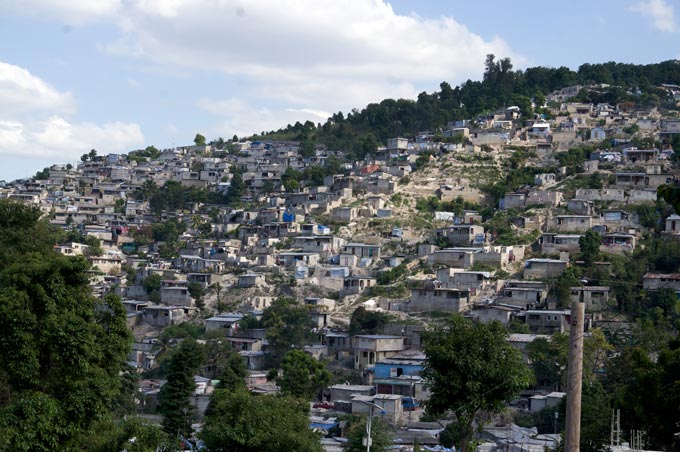
The hills of Carrefour, Haiti, 2011. Photo by Flickr user PWRDF.
I have loved Edwidge Danticat’s novels, plays and memoirs for nearly 20 years, since her remarkable 1994 debut with Breath, Eyes, Memory, a title that summons the human body and its mysteries. How else could one get to know Haiti, a place of such vast, complicated sensual history? Danticat explores the intimacies of sight, taste, smell and touch with great eloquence.
But perhaps it is what and how she hears—the sounds of Haiti—that first brought me to appreciate her great skills as writer. Sound is the most vivid memory of my first visit to Haiti in 1986: the sound of drums traveling village to village, up to the remote mountain parish where I was helping to build a school; the sound of drums carrying the joyful news that Baby Doc had fled the country.
A quarter of a century later, we can see and hear—in an instant—the news from Haiti. Baby Doc is back. A hurricane has hit. Or, an election was held. But certainly nothing has shaped the world’s awareness of Haiti more than what happened on January 12, 2010, at 4:53 p.m. EST. The earthquake. More than 300,000 dead, at least another 300,000 wounded, more than a million homeless in a country of just nine million.
Since that day everything we have seen and heard from Haiti is inflected by the fact and force of this continuing disaster. It is news both devastating and hopeful. But unlike the sound of drums, unlike the breath, eyes, memory and touch of actual Haitians, the news, in the end, is a great injustice: it is just information, empty of the essential truths of individuals, their stories, their families, their struggles, their dignity. Behind the sound bites of trauma, the fait accompli of conflict, the assumptions and generalizations of failure is where the rich and compelling Haiti really is. And that is where the art, music and literature of Haiti and its diaspora also are. In the twenty years since her debut, Edwidge Danticat’s much-praised, award-winning work has limned these truths for profound and beautiful narratives of rupture, conflict, intimacy and hope.
I visited Haiti at the end of October 2012 with President Bill Clinton and Secretary of State Hillary Clinton to attend the opening of a major new community development in Cap-Haïtien: an industrial park with a new textile factory, new housing, a school and health clinic, a green power plant and new roads. While I was in Haiti, I had a copy of Danticat’s latest book of essays, Create Dangerously, which speaks powerfully to the urgency of what artists must be willing to risk to tell the real story of any place or any people.
After I returned, I invited Danticat to sit down with me for Creative Time Reports to discuss Haiti as it passed the third anniversary of the earthquake. We met in a small recording studio in Coral Gables, Florida. We discussed life in both Haiti and America and we talked about the nature of storytelling after the earthquake. How do ways of speaking, whether in Creole, French or English—a negotiation of which is at the center of Danticat’s work—converge? How do you make a life in love and suffering into language?

